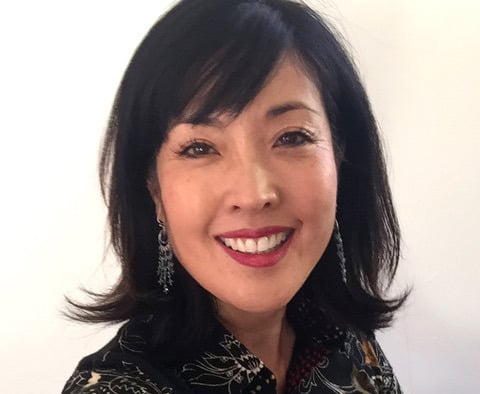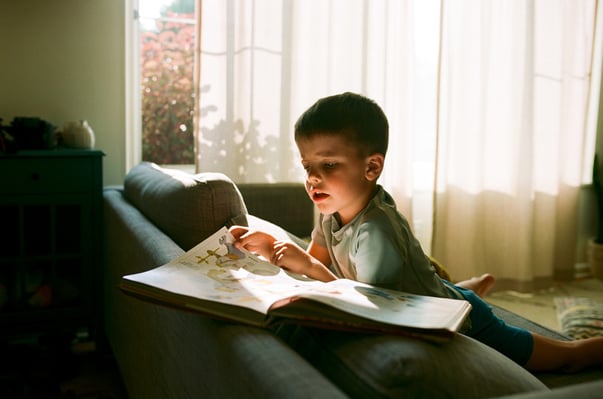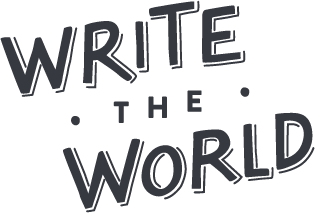Children’s books are often thought of as somehow ‘easier’ to write than books for older readers. However, this couldn’t be further from the truth. Even the beloved Roald Dahl said that children’s books are hard to write—“[children] only read for fun; you’ve got to hold their attention” he said. A successful children’s author can captivate their audience through the way they tell their story. In author and illustrator Kathryn Otoshi’s One, for instance, Kathryn created a dialogue between a series of vibrant watercolor dots to help children learn how to take a stand against bullying. The combination of her compelling, yet simple, watercolor paintings and her expertly crafted characters and plot, strike the perfect balance between visually enticing and enlightening.
Today, we’re delighted to share our interview with Kathryn—our Writing for Children Competition Guest Judge—who touches on a host of topics including her process for writing and illustrating a book, her advice to young writers who are eager to turn their passion into a career, and the key elements she’s looking for in a winning entry.

Can you tell us a bit about how you became a children’s book author?
My journey and love for children’s books began a long time ago. My parents used to read bedtime stories to me as a child—it was a time I always looked forward to. I ended up embracing reading growing up, and my love for stories later influenced me to want to be an author and illustrator of children’s picture books. But I didn’t start doing this right away. I did graphic design for the film industry for many years. I later realized my background in movies was a wonderful platform to learn about character development, story, and the importance of editing.
And what advice do you have for young writers who want to become an author?
My advice to young writers would be to read lots of books—and just start writing! Discover the kind of stories that you love. Plant your ideas and nourish them with attention. Pray for sunshine. In the meanwhile, find others who care about stories and writing as much as you do. Take classes. Take chances. Hone in on your craft. Soon the garden in your mind will grow. It takes time, energy, discipline and persistence. Many talented writers want to get into this industry, but it’s the ones who have a strong passion and are willing to persevere through the challenges who thrive.

Do you sit down to write the text for your books with the illustrations in mind?
Yes! I usually start with the writing first. When I get ‘stuck’ I start pulling out my secret weapons—my pens and colored pencils—to draw the scene out. It helps me see the story with a new perspective. I don’t always know what the illustrations will look like in the beginning. I have to sift through the ‘cabinet drawers’ in my mind to figure out which media to use (watercolors, acrylics, pastels, collage) and then I decide on the style that will best suit my characters.
How much do the illustrations in a children’s book tell the story?
Illustrations are a huge part of a picture book. But sometimes, depending on the kind of story it is, there are no words at all—thus it’s called a wordless picture book. The first wordless picture book I did was with Roaring Brook Press called Draw the Line. Since this story had to do with connecting and reaching out to others, I saw that a single black Line could symbolically be used as a character to express what it means to connect, disconnect, break and mend. Because the book was about conflict resolution and reaching out, I wanted to do a book that could cross over all languages and cultures. Even before we learn to read and write, we learn visually. So the book purposely uses illustrations only to portray the entire story.

What are you looking for in a winning entry?
I am open to all kinds of stories and subject matters, appropriate of course to the children’s book genre. Why we feel a story is compelling to us can be objective. I do remember when I was first starting out, an agent once told me “if you can make me laugh or cry out loud, then that’s how I know your story is for me.” But what she was saying was she was looking for a story that made her feel something authentic and heartfelt.
For the basics, I am looking for a compelling, thought-through story with a strong plot—and characters I can connect with. From there, the rest comes from the writer—voice, tone, nuance and rhythm. Usually, when the author has a need to tell a story, that passion will shine through. I am looking forward to reading everyone’s entries!
What can we look forward to from you in the new year?
My upcoming book comes out in Fall 2020. Lunch Every Day is about a boy named Jimmy who bullies and takes another kid’s lunch at school every day. The negative pattern continues until a surprising act of kindness happens, changing the way Jimmy sees himself in the world forever.
Kathryn Otoshi is a multi-award winning author/illustrator and national/international speaker best known for her character-building book series, Zero, One, and Two. She goes to schools across the country to encourage kids to develop strong character assets, and helps teachers find customized, creative methods to engage students through art, reading and the power of literature. Her latest books, Beautiful Hands and Draw the Line (Roaring Brook) make important statements about connecting, reaching out and building community. Her upcoming book is called Lunch Every Day (Fall 2020).





